Container plants are a great addition to your yard. Whether you have a garden or not, container plants can add color to the porch, patio, or steps. So many flowers can grow beautifully in them! But the container is just as much a part of the decor as the plant itself.
There are all kinds of materials used for planters. Some are works of art; others are purely functional. Which should you choose? We’re going to look at the most common materials for planting containers.
Factors In Choosing A Type Of Planter
Almost any plant can live at least part of its life cycle in a container. Of course, some may grow too large to keep in anything of a practical size.
However, some plants are destined for your garden. For them, the container is only a temporary home. It can still be fancy if you intend to display it. But it could also be plainer, such as containers you use to start seedlings.
The place where you want to have your container plants also affects the type of container you choose. For instance, hanging plants look great, but you don’t want a heavy container for those! Likewise, if the container itself is going to be hidden, you don’t need to spend a lot on one that looks great.
Different plants have different moisture needs, too. Be sure to take into account the drainage (or lack of drainage) of the container when choosing it.
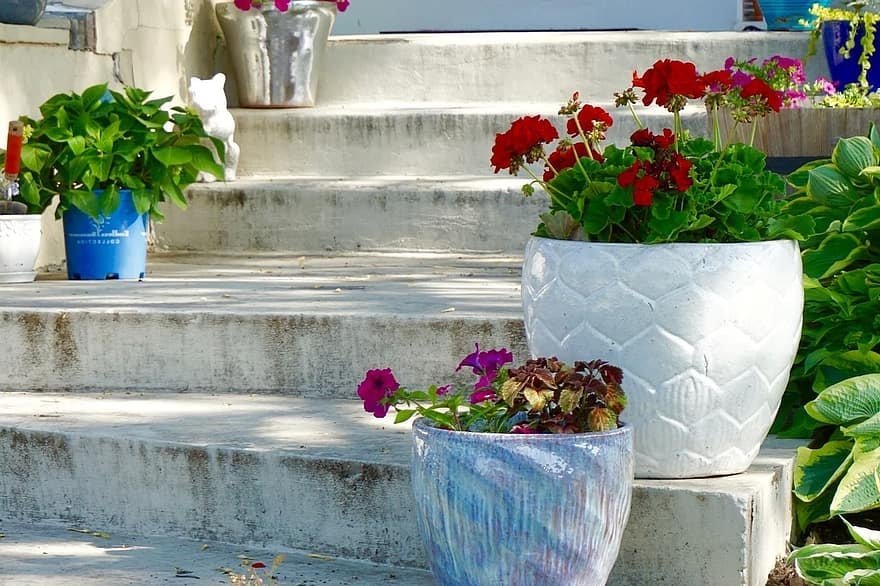
Types of Containers
Pressed Paper
If you’re starting seedlings for your vegetable garden, pressed paper pots are a great choice.
They’re inexpensive, lightweight, and biodegradable. They also hold some moisture, helping to keep the soil from drying out quickly. They also “breathe”, letting air in. The price of pressed paper planters is great.
The downsides are that they have to be replaced every year since they do break down over the course of a season. They’re not designed for display, either.
Coconut Husk
Coir is the organic fiber that comes from the husk of the coconut. Coir planters are, therefore, organic. They’re a bit tougher than pressed paper. But they still help retain moisture. They are more expensive than pressed paper but still economical.
The visual appeal is a bit better than paper but still not great. And, as an organic material, they will decompose. They normally last just one season.
Plastic
Plastic planters are lightweight and inexpensive. Many come pre-drilled with drainage holes. If not, it’s not too hard to add them yourself.
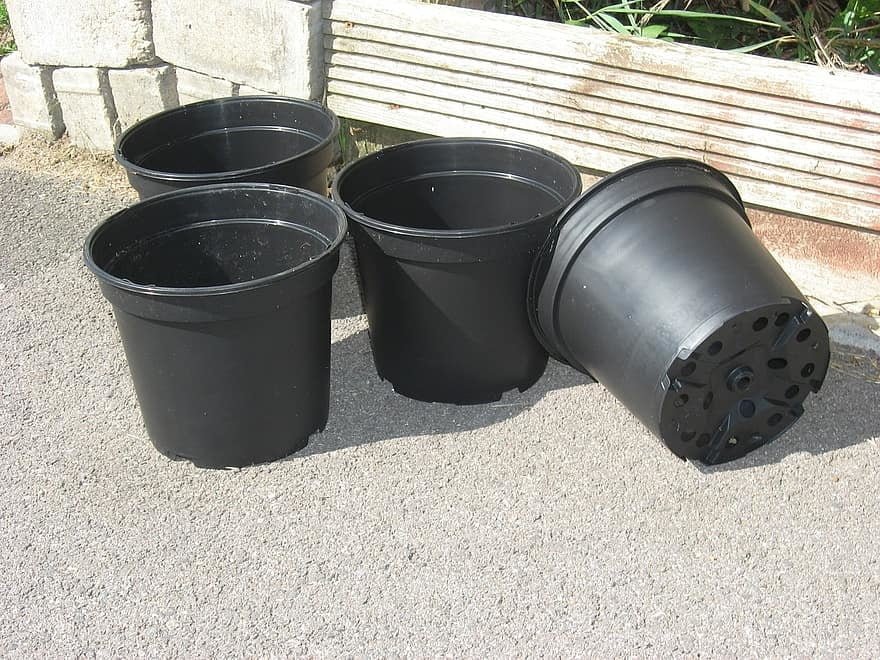
On the other hand, plastic isn’t environmentally friendly. And few plastic planters are ornate. They work best if they’re going to be put inside a window box or other container that isn’t suited for contact with soil.
Plastic isn’t breathable or doesn’t do anything to hold moisture, either.
Stone
Stone planters are durable and beautiful. Most won’t blow over in a light breeze like some of the types above. These are great permanent pieces. They can come in all sizes, from tabletop to standalone centerpieces.
Stone can also help keep the soil cool, protecting the plant’s roots.
On the other hand, stone tends to be expensive. It doesn’t allow any air to pass through it, either. You also have to be careful to add only the right amount of water as it doesn’t usually offer drainage.
Wood
Wood is an organic material, but it can be treated so that it doesn’t break down. Even if untreated, the breakdown is slow and the container will hold up for years.
Wood planters can be ornate. They may look natural or be carved into any figure imaginable. They offer a rustic look that blends well with many gardens.
They also hold moisture and allow some breathability.
Untreated wood on the inside of a planter can potentially harbor plant diseases. Commercial wood planters should have been disinfected, but be careful when using DIY planters.
Concrete
Durable, inexpensive, and long-lasting, concrete planters can take on many forms. They can even be a DIY project. And no matter the size you need, you’ll be able to buy or make a concrete planter to suit your needs.
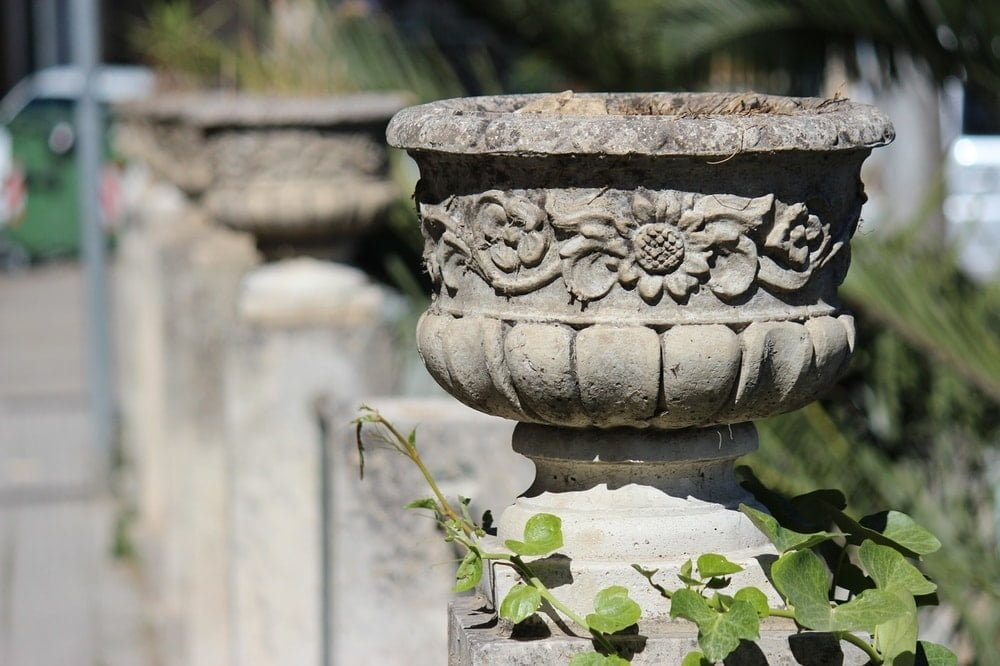
Concrete can be molded into wonderful shapes, but it’s not generally regarded as the most beautiful material. It’s also weighty. With a large planter, you’ll want to be sure you choose the right spot for it. You’re not going to want to move it later on!
Hypertufa
Another durable option, hypertufa combines peat moss, cement, and sand or vermiculite. It’s strong but not nearly as heavy as concrete or stone. They can last ten to twenty years.
Hypertufa planting containers make a great DIY project and you can mold them however you like.
They still have a concrete look that might not appeal to everyone. If you do them as a project yourself, be sure to think about drainage, too.
Terra Cotta
Terra cotta is a traditional material. It can be found in a whole range of qualities – and prices to match. It breathes well. It also has a great look. It’s relatively durable, too.
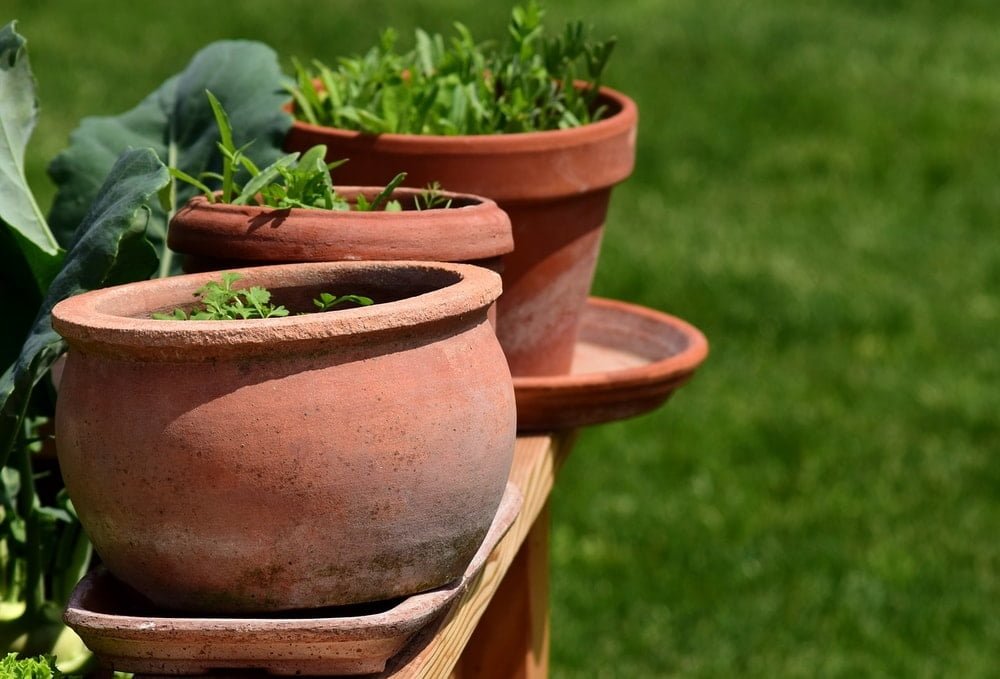
Some terra cotta planters that can be expensive. Also, most pieces aren’t likely to survive a fall. We wouldn’t say they’re “delicate” but they’re not extremely durable, either.
Fiberglass
Another great material for planters is fiberglass. Although it sometimes looks like plastic, it can also be a bit fancier. It’s tougher, as well.
Fiberglass is more expensive than plastic. And like plastic, it doesn’t allow air to pass through the material itself.
Metal
Metal can be used as a plant container, too. It’s strong and can be light. It can come in many shapes and sizes.
However, metal can also rust due to the necessary moisture inside a planter. We prefer it as an outer cover that you might place a plastic planter inside.
Hanging Grow Bags
Ok, this isn’t really a material, but instead a style of container. Hanging grow bags are sometimes made of plastic, but more often are felt or nylon.
They’re a great way to spread your flora right up the wall so you can enjoy it all around you!
Recycled Materials
Of course, you don’t have to buy a new planter. Many household items can be recycled for this purpose!
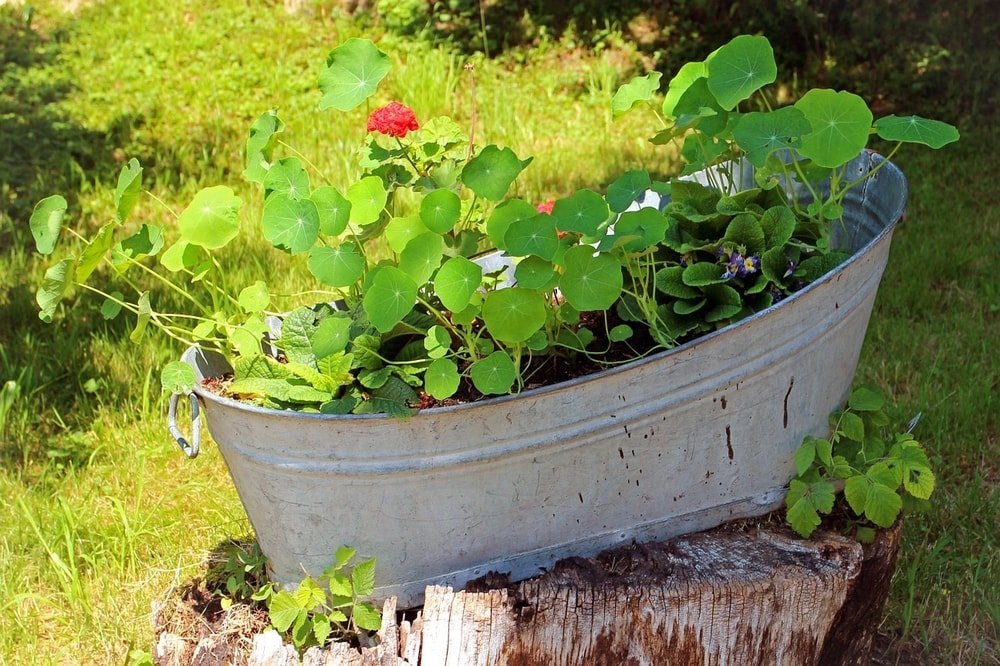
Old buckets, pots, even an old wheelbarrow can make great display containers. Old tires can be converted into tires, too. Even small cardboard boxes or soda bottles can become temporary planters to start your tomatoes or other vegetables!
Conclusion
When it comes to planting containers, you have a huge range of options. There are so many suitable materials as well as sizes and shapes to choose from. Make your choice based on how permanent you want it to be and whether the planter itself will be on display!









